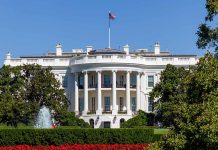
The FAA has mandated inspections for Boeing 787 aircraft following a harrowing midair incident, but will these measures be enough to ensure ongoing safety in the skies?
At a Glance
- The FAA requires inspections of Boeing 787 Dreamliner aircraft after a midair dive by a LATAM Airlines flight in March.
- The inspections apply to certain Boeing 787-8, 9, and -10 airplanes.
- Operators must inspect cockpit seats for missing or cracked rocker switch caps and perform any necessary corrective actions within 30 days.
- Boeing supports the FAA’s directive and is moving ahead with pilot seat switch inspections.
FAA’s Mandate Following Midair Incident
The Federal Aviation Administration (FAA) has mandated immediate inspections for all Boeing 787 aircraft following a disturbing incident earlier this year, when a LATAM Airlines flight experienced a terrifying midair dive. Operators are directed to inspect the Captain’s and First Officer’s seats for any missing or cracked rocker switch caps and assembly issues. Required corrective actions must be completed within 30 days to prevent similar occurrences.
Severe turbulence during the LATAM flight in March resulted in multiple injuries. Passengers were thrown from their seats, striking the ceiling and aisles. According to reports, 50 people were injured, some severely, with visible blood from head injuries. The turbulence also caused damage to the plane’s interior, further highlighting the seriousness of the incident.
Broader Implications for the Boeing 787 Fleet
The FAA’s directive applies to US-registered airplanes and globally operating Boeing 787s. The directive emphasizes the need for these thorough inspections and timely corrective actions to ensure flight safety. Operators must check the cockpit seats for any issues involving the rocker switch caps and seat cover assemblies.
A passenger of the March flight described the harrowing experience to Australia’s ABC News: “The plane, unannounced, just dropped. I mean it dropped unlike anything I’ve ever experienced on any kind of minor turbulence, and people were thrown out of their seats, hit the top of the roof of the plane.”
Boeing remains supportive of the FAA’s actions, asserting they are making necessary moves to comply with the inspection directives and enhance aircraft safety. This comes amid heightened scrutiny over the company’s safety practices and regulatory compliance, particularly involving the Boeing 787 Dreamliner fleet.
Ongoing Safety & Regulatory Scrutiny
This incident and others have prompted the FAA to increase regulatory scrutiny on Boeing. The FAA has received four additional reports of similar issues since the March incident, further underlining the importance of rigorous safety inspections and preventative measures. In June, Boeing discovered incorrectly installed fasteners on some undelivered jets, while in May, the FAA investigated potential falsifications of aircraft records by Boeing employees.
“The plane, unannounced, just dropped. I mean it dropped unlike anything I’ve ever experienced on any kind of minor turbulence, and people were thrown out of their seats, hitting the top of the roof of the plane,” Brian Jokat, a passenger, told ABC News.
Boeing also admitted flaws within its inspection processes, with Scott Stocker, head of the 787 program, citing employee misconduct as a reason for missed inspections. Prompt corrective actions were reportedly taken to address those deficiencies.
Boeing continues to navigate challenges, including ongoing safety investigations and financial strains due to parts shortages. The company faces mounting pressure to uphold safety and reliability standards, given the public’s dependence on air travel.
The FAA has mandated inspections of hundreds of Boeing 787 Dreamliners following a LATAM Airlines flight incident in March 2023.
Read more at AviationSource!https://t.co/HCXVxPkhD2#FAA #airlines #Boeing #Boeing787 #Dreamliner #AvGeek pic.twitter.com/qXw7FVNZX3
— AviationSource (@AvSourceNews) August 20, 2024
Ensuring Future Flight Safety
The FAA’s rigorous inspection mandates underscore the agency’s commitment to ensuring air travel safety. While Boeing supports these directives, the company’s reputation and operational practices are under unparalleled scrutiny. With the industry’s trust at stake, Boeing must not only comply but exceed standards to restore confidence in its fleet and operations.
The future of Boeing’s 787 Dreamliner and the safety of its passengers depend on the swift and comprehensive adherence to these new safety measures. The aviation community and the public will be closely monitoring Boeing’s response to these directives to ensure that such incidents do not recur.
FAA Issues Safety Directive for Boeing 787 After LATAM Incident
– Eric Beech #aviation https://t.co/0JAF9NcSVGhttps://t.co/is8VCFEl8h— Aerospace News by HYPE (@HypeAviation) August 19, 2024










